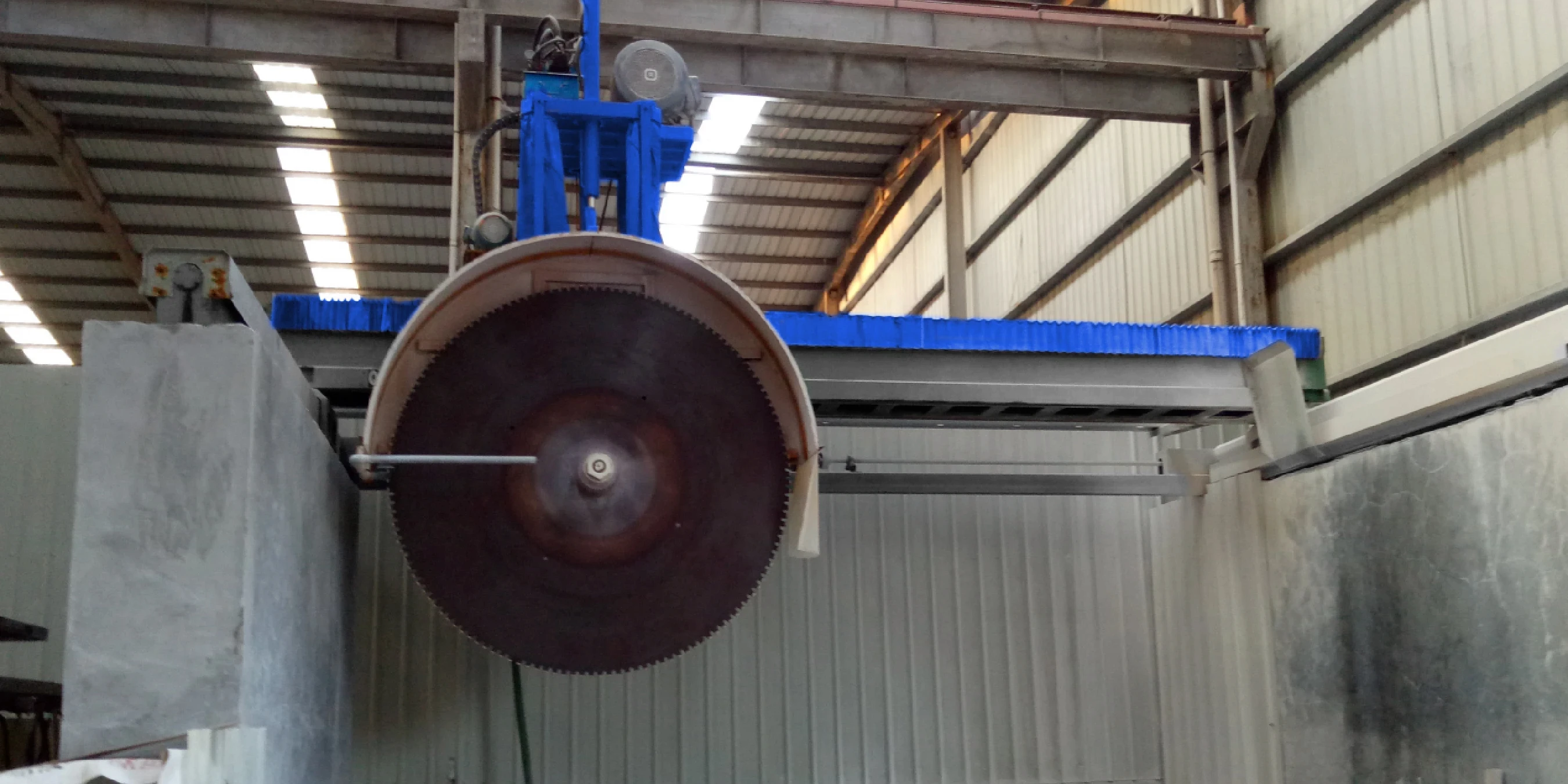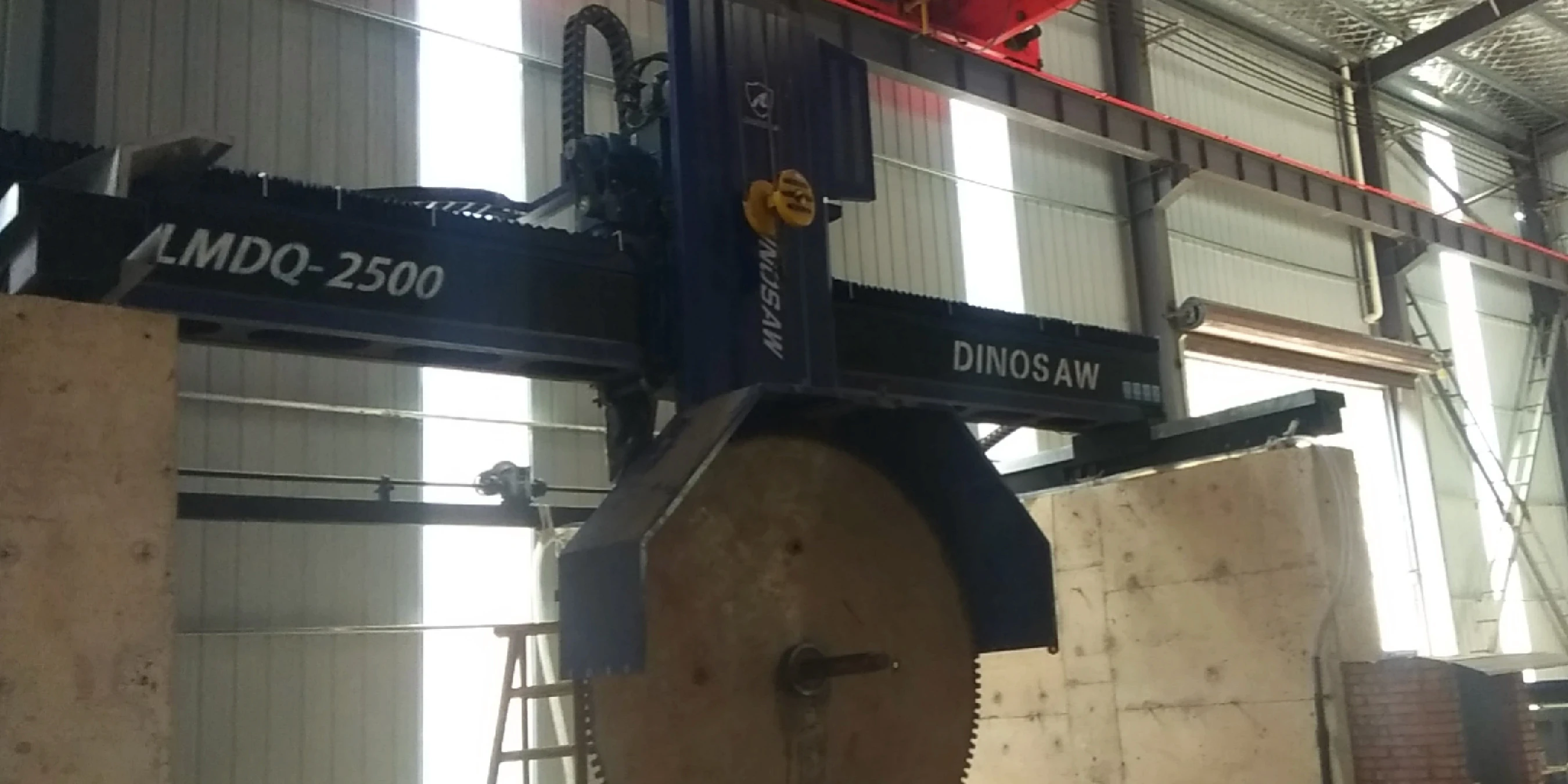Hi, this is Lizzy from Dinosaw ( Not a Robot ). Which Machine ( model ) do you want? Please WhatsApp us now
A practical guide to selecting a multi-blade stone block cutting machine. Compare guide-post vs. slide lift, use our if-then selection tree for granite & marble, and align procurement criteria with throughput goals.
Conclusion-first - Match lift type (guide-post vs slide), blade diameter bands, and multi-blade configuration to your block mix, tolerance targets, and throughput goals. Multi-blade block saws cut several kerfs per pass, delivering higher throughput than single-blade setups, while a cast crossbeam frame maintains accuracy on hard stone (manufacturer-reported).
Get a selection checklist aligned to your procurement criteria and current block diameters.
Decision Dimensions
- Block sizes and stone types: Granite vs marble; diameter bands (Φ1650, Φ1800/Φ2000, Φ2200, Φ2500, Φ2800).
- Finish needs (as-needed): Align kerf targets with polishing; tolerance managed downstream when required.
- Throughput targets: Daily m³, loader utilization, rework rates.
- Site constraints: Power/water, dust/slurry handling, operator skills, maintenance capacity.
- Lifecycle costs: Blade life, changeover time, spares/lead times, warranty & training.
If-Then Selection Tree
Blade Diameter & rpm
- If blocks are Φ1800–Φ2000 and slabs 4.0–4.5 mm → start at 455 r/min; if slabs ≥5.5 mm → start 408 r/min (manufacturer-reported).
- If blocks are Φ2500 → typical starting 327 r/min; Φ2800 → 287 r/min (manufacturer-reported).
- If target finish is premium marble → keep spacing constant per SKU family; verify kerf vs blade spec.
Lift System (Precision vs Retrofit)
- If tight tolerance and repeatable vertical guidance are mandatory → choose guide-post lift (standard on DINOSAW) to reduce deviation.
- If budget-first retrofit or specific layout constraints → consider slide lift; accept higher alignment maintenance.
- If hard stone and high accuracy → prefer guide-post + cast crossbeam frame (manufacturer-reported).
Multi-Blade Configuration
- If daily throughput is the bottleneck → move from single-blade to multi-blade block saw to cut multiple kerfs per pass.
- If slab packs must match export bundles → space blades by target thickness and schedule by diameter bands.
- If finishing complains about rejects → stabilize spacing and QA at pack-out; align kerf targets to polishing line.
- If budget-first with mixed hard stone → slide lift + rigorous QA; plan upgrade path to guide-post.
- If export logistics require consistent bundles → schedule by diameter bands and unify spacing with polishing line requirements.

Neutral Comparison: Guide-Post vs Slide Lift
| Aspect | Guide-Post Lift | Slide Lift |
|---|---|---|
| Precision | Tighter vertical guidance; lower deviation | Relies more on wear management and frequent checks |
| Maintenance | Uses semi-fluid grease (000/00) and clearance checks | May need auto-lube and track inspection |
| Retrofit Complexity | Requires robust columns and alignment | Can fit some legacy frames more easily |
| Speed & Stability | Better stability for multi-blade and hard stone (manufacturer-reported) | Relatively lower stability for high-demand scenarios |
To benchmark vendor families and positioning, see Top Brands in Stone Cutting.
Procurement Topics
- Spares & consumables: Blade inventory, bearings, pulleys, lubrication; lead times and local stock.
- Maintenance windows: Planned downtime, QA routines, training for alignment checks; inquire about service response times.
- Warranty & service: Coverage, response time, remote diagnostics. Compare price against total cost of ownership. Focus acceptance on daily output (m²) rather than uptime % for initial cutting.
- Installation & commissioning: Power/water verification, safety guarding, operator training.
- Compliance: Dust/water handling, electrical safety, PPE, local regulations.
Scenario Recommendations
- First choice: Quarries and yards running granite/marble at scale → guide-post lift + multi-blade; schedule by diameter bands; spacing by target thickness.
- Fallback: Retrofit sites with budget constraints → slide lift + QA heavy routines; accept tighter maintenance cadence.
- Not recommended: Sites lacking adequate power/water or without maintenance capability.
When planning complex shapes or alternative methods for niche orders, review our Diamond Wire Saw Guide as a complementary approach. For finishing line coordination and tooling choices, see our Stone Grinder Guide.
When creating procurement documents, you may find it useful to reference a specific stone block cutting machine for sale to ensure all technical specifications are accurately captured.

Frequently Asked Questions
How do I choose between guide-post and slide lift?
- Use tolerance targets and maintenance capacity as primary criteria.
- Guide-post: higher precision and stability; Slide: budget-friendly retrofit with heavier QA.
Which lift type reduces maintenance cost over 12 months?
- Guide-post: Generally lower long-term cost with predictable grease/clearance checks. Fewer unplanned adjustments.
- Slide: Lower initial cost but can incur higher expenses from track wear, alignment drift, and more intensive auto-lube system maintenance.
Which blade diameters suit quarry granite?
- Common bands: Φ1650, Φ1800/Φ2000, Φ2200, Φ2500, Φ2800.
- Example rpm: 455/408 for Φ1800/Φ2000; 327 for Φ2500; 287 for Φ2800 (manufacturer-reported).
How should multi-blade spacing be set?
- Start from slab thickness and kerf.
- Standardize spacing for marble SKU families.
- Align kerf targets with polishing line requirements.
What procurement KPIs should I track?
- Daily output (m²), blade change intervals; loader idle time & on-time shipments. Tolerance is tracked only when finish-critical.
























 English
English 中文
中文 Italian
Italian Türkçe
Türkçe Português
Português

